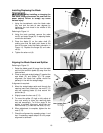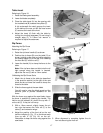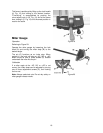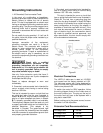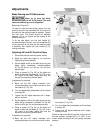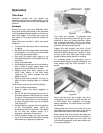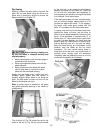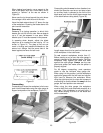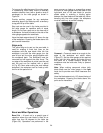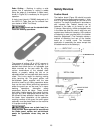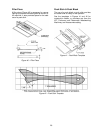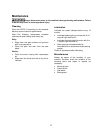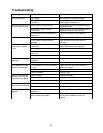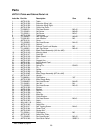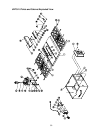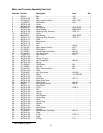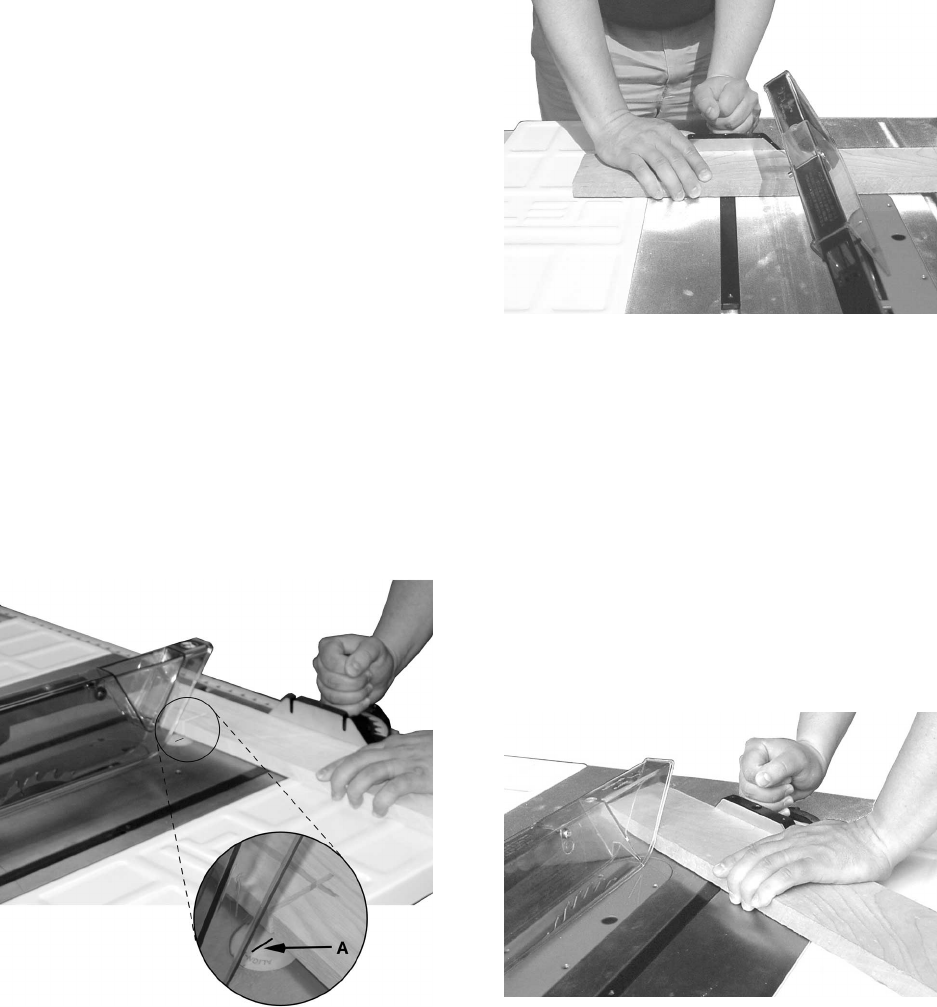
24
To improve the effectiveness of the miter gauge
in crosscutting, some users mount an auxiliary
wooden extension face (with a glued-on strip of
sandpaper) to the miter gauge as shown in
Figure 34.
Provide auxiliary support for any workpiece
extending beyond the table top with a tendency
to sag and lift up off the table.
Stop rods can be used in the holes provided in
the miter gauge for repetitive work of equal
length. Do not use a stop rod on the free end of
a workpiece. It should be used on the side of the
miter gauge opposite the saw blade.
Have the blade extend about 1/8" above the top
of the workpiece. Exposing the blade above this
point can be hazardous.
Align-a-rip
The yellow align-a-rip pad on the saw table is
used for creating a mark that lines up the
workpiece with the saw blade. After the first
workpiece is cut with the miter gauge, turn the
saw off and pull the miter gauge together with
the workpiece back. The workpiece must be
unmoved and still against the miter fence. The
cut edge of the workpiece is pulled over the pad
and the pad can be marked with a pencil
(A, Fig. 35). Now, when cutting the next marked
workpiece, the workpiece can be lined up with
the line on the pad and cut.
Figure 35
Bevel and Miter Operations
Bevel Cut – A bevel cut is a special type of
operation where the saw blade is tilted at an
angle less than 90 degrees to the table top
(Figure 36). Operations are performed in the
same manner as ripping or crosscutting except
the fence or miter gauge should be used on the
right-hand side of the saw blade to provide
added safety in avoiding a binding action
between the saw blade and the table top. When
beveling with the miter gauge, the workpiece
must be held firmly to prevent creeping.
Figure 36
Crosscut – Crosscuts made at an angle to the
edge of the workpiece are called miters
(Figure 37). Set the miter gauge at the required
angle, lock the miter gauge, and make the cut
the same as a normal crosscut except the
workpiece must be held extra firmly to prevent
creeping.
Note: When making compound miters (with
blade tilted) use the miter gauge in the right
hand slot to provide more hand clearance and
safety.
Have the blade extend only 1/8" above the top of
the workpiece. Exposing the blade above this
point can be hazardous.
Figure 37



